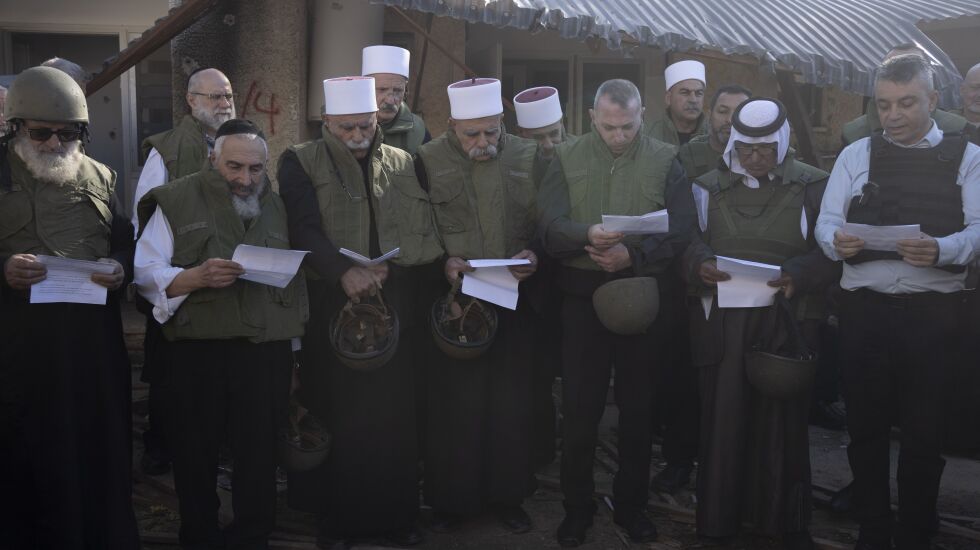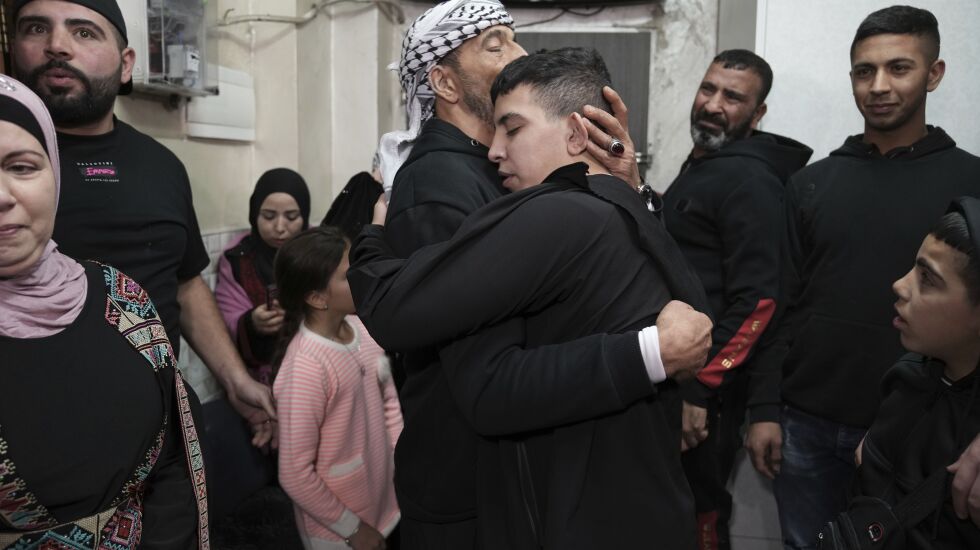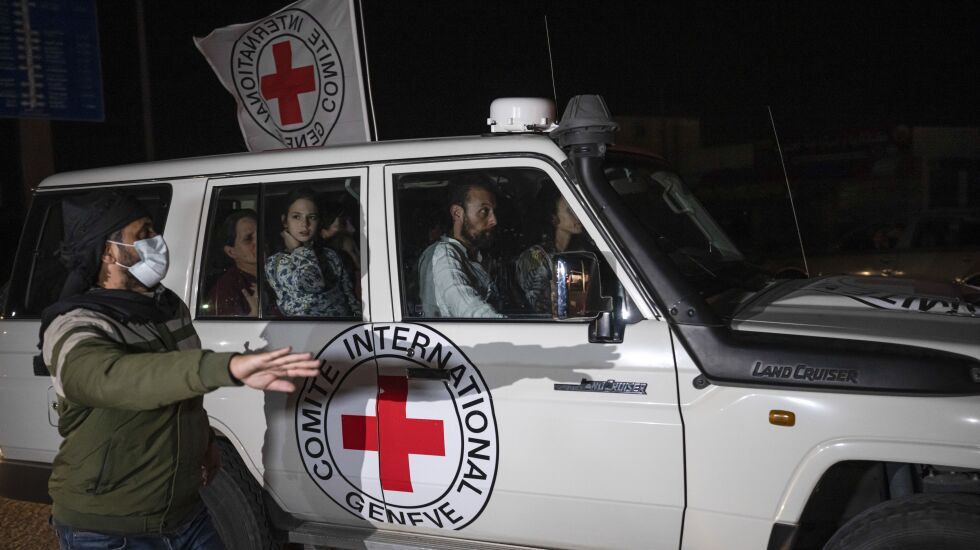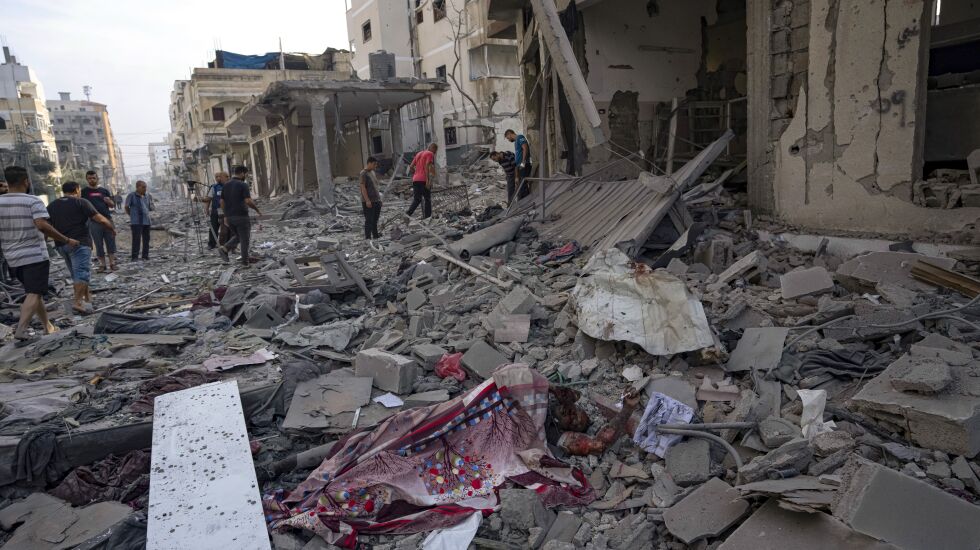
DEIR AL-BALAH, Gaza Strip — International mediators appeared to make progress Wednesday on extending the truce in Gaza, encouraging Hamas militants to keep freeing hostages in exchange for the release of Palestinian prisoners and further relief from Israel’s air and ground offensive. The cease-fire will otherwise end within a day.
Israel has welcomed the release of dozens of hostages in recent days and says it will maintain the truce if Hamas keeps freeing captives. Still, Prime Minister Benjamin Netanyahu underscored Wednesday that Israel will resume its campaign to eliminate Hamas, which has ruled Gaza for 16 years and orchestrated the deadly attack on Israel that triggered the war
“After this phase of returning our abductees is exhausted, will Israel return to fighting? So my answer is an unequivocal yes,” he said. “There is no way we are not going back to fighting until the end.”
He spoke ahead of a visit to the region planned this week by U.S. Secretary of State Antony Blinken to press for further extensions of the truce and hostage releases.
Weeks of heavy aerial bombardment and a ground invasion demolished vast swaths of Gaza and killed thousands of Palestinians. But it seems to have had little effect on Hamas’ rule, evidenced by its ability to conduct complex negotiations, enforce the cease-fire among other armed groups, and orchestrate the release of hostages. Hamas leaders, including Yehya Sinwar, have likely relocated to the south.
Most of Gaza’s 2.3 million people are now crammed into southern Gaza, with some three-quarters of them driven from their homes. The truce has led to a frenzied rush to obtain supplies to feed their families as aid enters in greater, but still insufficient, amounts. Hanging over everyone is the fear that fighting will soon resume.
International pressure for a lasting cease-fire is mounting. An Israeli ground invasion of the south to pursue Hamas will likely bring an escalating cost in Palestinian lives and destruction that the United States, Israel’s main ally, could be unwilling to bear.
The Biden administration has told Israel that if it launches an offensive in the south, it must operate with far greater precision.
“How far both sides will be prepared to go in trading hostages and prisoners for the pause is about to be tested, but the pressures and incentives for both to stick with it are at the moment stronger than the incentives to go back to war,” Martin Indyk, a former U.S. ambassador to Israel, wrote on X.

Diplomacy ramps up
The cease-fire is due to end at some point after an exchange of hostages and prisoners Wednesday.
Diaa Rashwan, head of Egypt’s state information services, said negotiations have made progress and that it is “highly likely” an extension will be announced Wednesday. Egypt, along with Qatar and the U.S., played a key role in mediating the original cease-fire and a two-day extension announced Monday.
The war began with Hamas’ Oct. 7 attack into southern Israel, in which it killed over 1,200 people, mostly civilians. The militants kidnapped some 240 people back into Gaza, including babies, children, women, soldiers, older adults and Thai farm laborers.
Israel responded with a devastating air campaign across Gaza and a ground invasion in the north. More than 13,300 Palestinians have been killed, roughly two-thirds of them women and minors, according to the Health Ministry in Hamas-ruled Gaza, which does not differentiate between civilians and combatants.
The toll is likely much higher, as officials have only sporadically updated the count since Nov. 11 due to the breakdown of services in the north. The ministry says thousands more people are missing and feared dead under the rubble.
Israel says 77 of its soldiers have been killed in the ground offensive. It claims to have killed thousands of militants, without providing evidence.
Israel’s hostage dilemma
The plight of the captives and shock from the Oct. 7 attack, have galvanized Israeli support for the war. But Netanyahu is also under pressure to bring the hostages home and could find it difficult to resume the offensive if there’s a prospect for more releases.
Israel said Wednesday around 160 hostages are still held in Gaza. Of those, 126 are men and 35 are women. Four are under the age of 18, and 10 over the age of 75.
The numbers of women and children would allow an extension of another three or four days. From its side, Israel has also been releasing Palestinian women and children. For men — and especially soldiers — Hamas is expected to push for comparable releases of Palestinian men or prominent figures, a deal Israel may resist. Israel has not said how many of the hostages are soldiers.
A total of 60 Israelis have been freed under the truce, most of whom appear physically well but shaken. Another 21 hostages — 19 Thais, one Filipino and one Russian-Israeli — have been released in separate negotiations since the truce began. Before the cease-fire, Hamas released four hostages, and the Israeli army rescued one. Two others were found dead in Gaza.
So far, 180 Palestinians have been freed from Israeli prisons. Most have been teenagers accused of throwing stones and firebombs during confrontations with Israeli forces. Several were women convicted by Israeli military courts of attempting deadly attacks.
Palestinians have celebrated the release of people they see as having resisted Israel’s decades-long military occupation of lands they want for a future state.

Tense calm in Gaza
For Palestinians in Gaza, any calm from the truce has been overwhelmed by the search for supplies and by horror as they see the extent of destruction after weeks of hiding from bombardment.
In the north, residents described entire residential blocks leveled to the ground in the center of Gaza City and the neighboring refugee camps of Shati and Jabaliya.
The smell of decomposing bodies trapped under collapsed buildings fills the air, said Mohmmed Mattar, a 29-year-old resident of Gaza City who along with other volunteers searches for the dead under rubble or left in the streets.
They have found and buried 46 so far during the truce, he said. Most were unidentified. More bodies remain inside rubble but can’t be reached without heavy equipment, Mattar said, adding that they have seen other bodies strewn in the streets but can’t get to them because Israeli positions are too close by.
Little aid is reaching the north, where tens of thousands of civilians are believed to remain. “Those who survived the occupation’s bombardment will die from hunger,” said one woman in the camp, Umm Rami.

In the south, the truce has allowed more aid to be delivered from Egypt, up to 200 trucks a day. But aid officials say it is nowhere near enough, given that most now depend on outside aid. U.N.-run shelters housing more than 1 million displaced have overflowed, with many sleeping outside in cold, rainy weather.
At a distribution center in Rafah, large crowds line daily up for newly arrived bags of flour. But supplies run out quickly before many can get their share.
“We’ve been searching for bread for our children,” said one woman in line, Nawal Abu Namous. “Every day, we come here … we spend money on transportation to get here, just to go home with nothing.”
Some markets and shops have reopened, but prices for the few items in stock have skyrocketed. A 25-kilogram (50-pound) bag of flour that once went for the equivalent of $2.7 now sells for $68 dollars.
Winter clothes are unavailable. One clothes shop owner in Deir al-Balah told The Associated Press that he hates opening his doors in the morning, knowing he’ll spend most of the day apologizing to customers for the winter items he does not have.
The head of the World Health Organization, Tedros Adhanom Ghebreyesus, said some 111,000 people have respiratory infections and 75,000 have diarrhea, more than half of them under 5 years old. “More people could die from disease than bombings.”
“We are fed up,” said Omar al-Darawi, who works at the overwhelmed Al-Aqsa Martyrs hospital in central Gaza. “We want this war to stop.”
Jeffery reported from Cairo and Lidman from Jerusalem.







